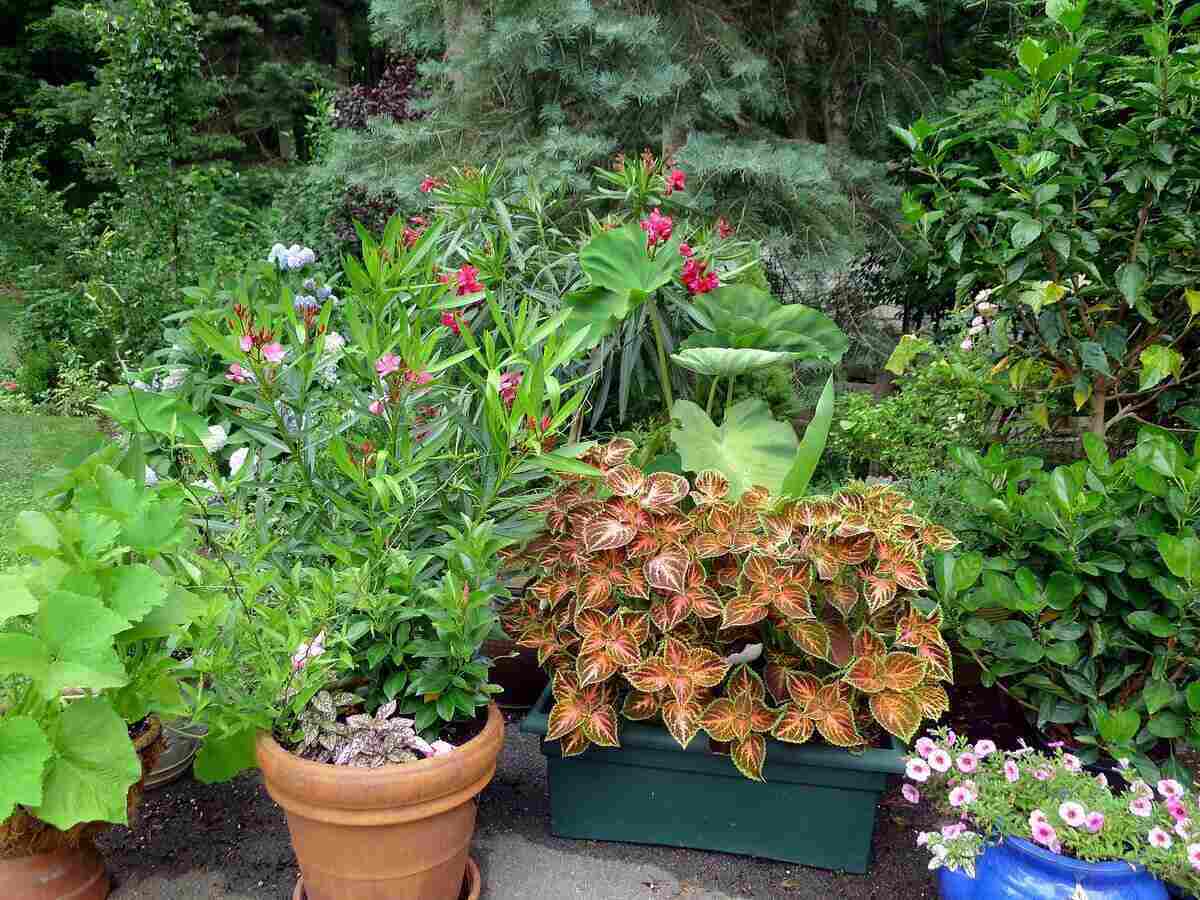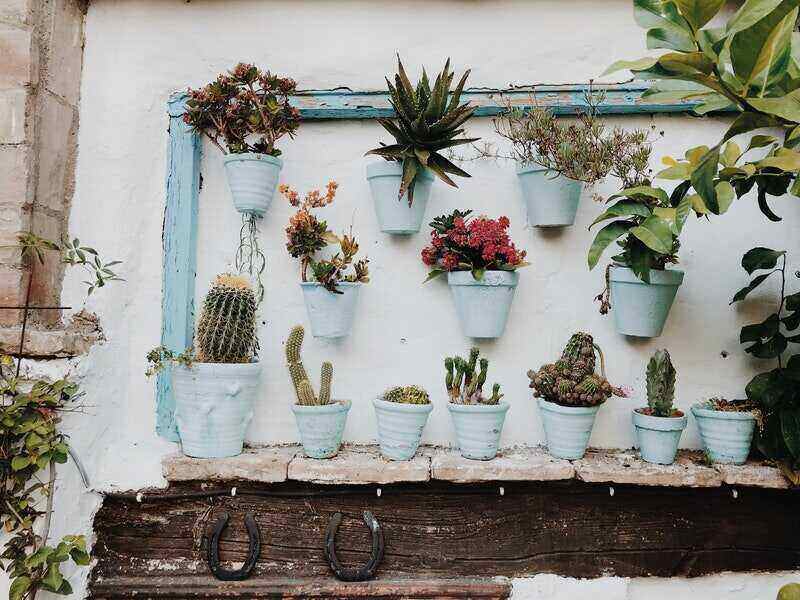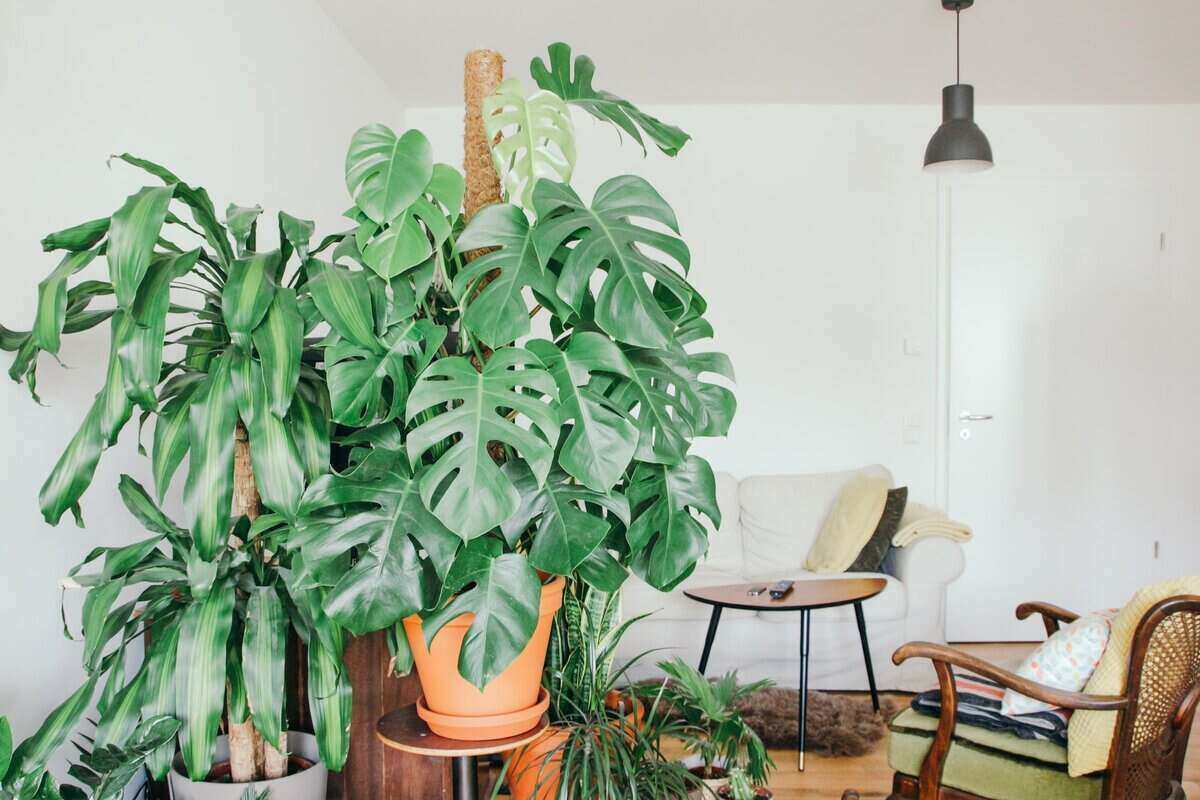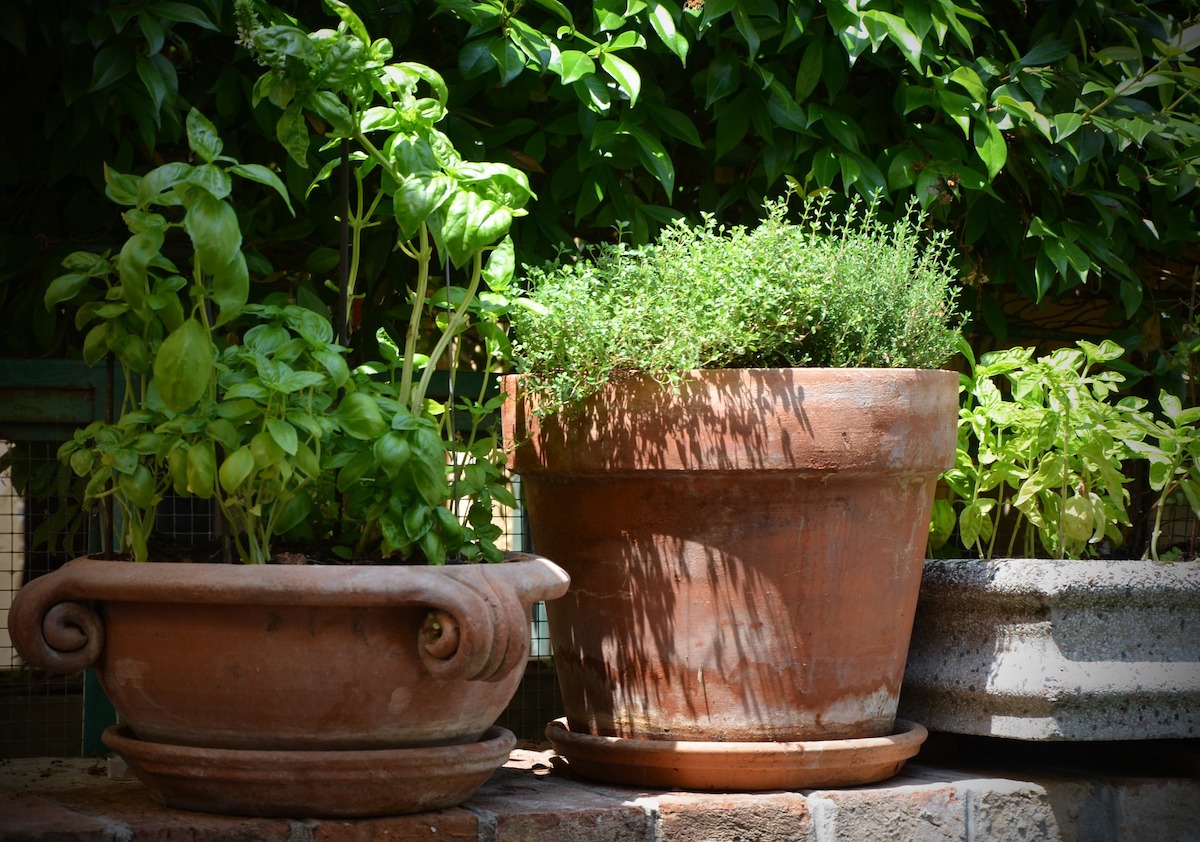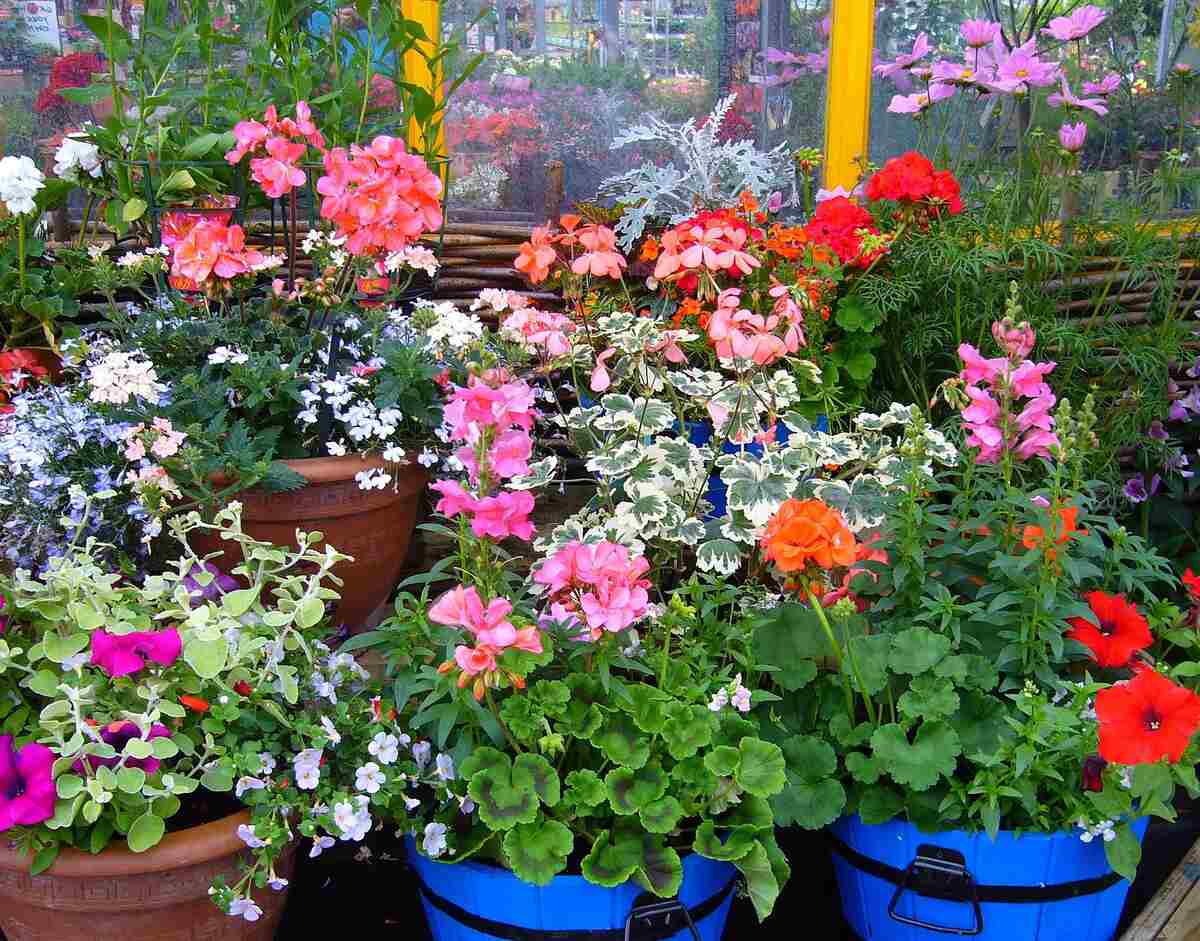
You love the splash of color your outdoor potted pots bring to your porch, walkway, or front yard. But what do you do with those potted plants at the end of the season? Container gardening need not end with the first cold snap. It comes down to knowing which outdoor potted plants to bring indoors during the winter and when to do it.
Plants That Should Go Inside for the Winter
“Many potted plants can easily be overwintered indoors as houseplants,” says Diane Larson, a horticulturist at Rutgers Cooperative Extension of Monmouth County, N.J. Larson recommends bringing all tropical plants indoors for the winter. They include:
- Calla
- Canna
- Ginger
- Gladiolus
- Palms
- Citrus
Other plants that should go inside during the winter months include:
- Hibiscus
- Pelargonium (better known as geraniums)
- Begonias
- Mandevilla
- Oleander
- Caladium
- Angel’s trumpet
- Succulents
- Coleus
- Herbs: Parsley, basil, rosemary, and mint can survive inside during cold weather.
Pro Tip: If you don’t have room to store your perennials indoors or in a greenhouse, buy plants that can withstand your area’s average low winter temperatures.
Plants That Can Survive Winter Outside
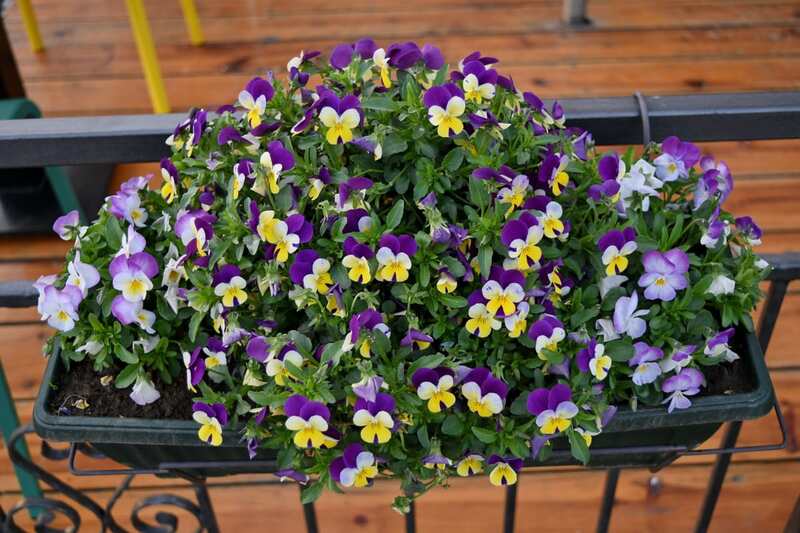
Other plants, with proper care, can stay outdoors during winter. They include:
- Japanese yew and Brown’s yew can dress up a front porch year-round. They’re drought-tolerant, cold-hardy, and like both full sun and partial-sun settings.
- Potted blue spruce is a popular evergreen that’s often raised as Christmas trees. It needs full sunlight, and the soil must be kept damp. Just be sure the pot has a drain hole so you won’t overwater it.
- Cypress topiaries need morning light and afternoon shade. You also have to make sure not to overwater, or they will rot.
- Boxwood hedges, English boxwoods, and winter gem boxwoods are shaped like topiaries and need full sunlight to survive harsh winters. The rule regarding watering boxwood shrubs is once to twice each week.
- Violas are tough enough to withstand snow, and will produce flowers over the winter. The trick is to keep them in a pot with good drainage. To keep violas flowering, snip off the heads once the flowers fade.
- English primrose, which comes in many colors, just gets going in the winter. It can take full sun when it’s cold, but make sure you water English primrose regularly.
How to Winterize Your Outdoor Potted Plants
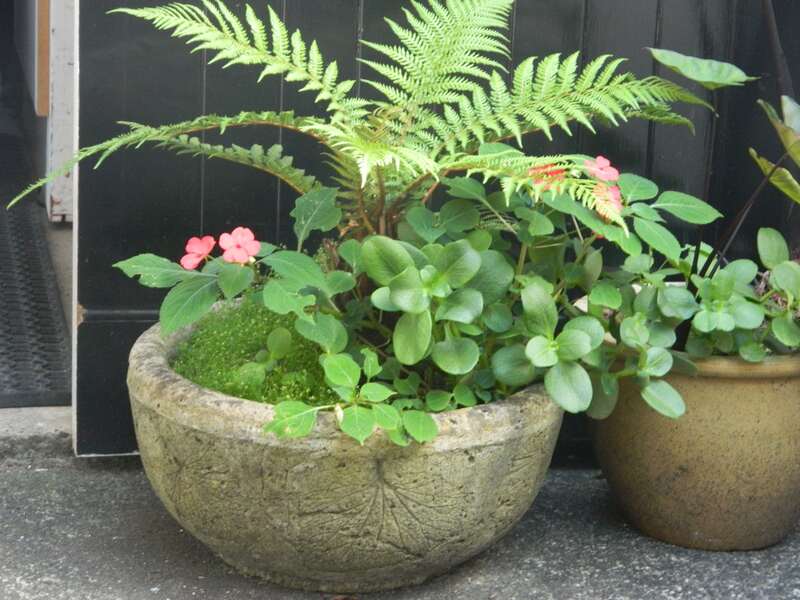
Photo Credit: PublicDomainPictures
For those cold-hardy plants that you leave outdoors, improve their odds of survival by placing them in winter containers.
Containers that work well in winter weather:
✓ Fiberglass
✓ Iron
✓ Stone
✓ Concrete
✓ Heavy plastic
Containers that DON’T work in winter weather:
✗ Terra cotta
Why terra cotta doesn’t work well in winter: Its water-absorbent nature causes it to freeze repeatedly and eventually crack.
✗ Ceramic pots
Why ceramic doesn’t work well in winter: Any chips in the glaze can let in water.
✗ Hanging baskets
Why hanging baskets don’t work well in winter: They dry out quickly and don’t insulate roots well.
Other Ways to Protect Your Outdoor Plants
Don’t overwater: Make sure your soil is well-drained. Because your plants won’t grow much in cold weather, avoid allowing the roots to be cold and damp for a long time. That’s a recipe for root rot .Don’t leave the pots in saucers; water can collect and freeze.
Protect the roots: Keeping heat and moisture around the roots will help the plant survive. Some ways to do that are:
- Use a bigger pot. This will increase the soil insulation around the roots.
- Wrap the pot. Burlap and bubble wrap are good choices.
- Bury the pot. Dig a hole in your garden, place the pot in the hole, and cover with soil or mulch.
When to Bring Plants Inside for Winter
If you plan on bringing plants inside, late fall is the time to pay close attention to the weather. While your local weather report will warn you of an impending frost or freeze, it’s best to avoid a last-minute rush to winterize and/or move your plants. So, how do you winterize your plants?
One way is to know what temperatures your plants will tolerate. The USDA Plant Hardiness Zone Map, based on the average annual minimum winter temperatures within a state, will help you determine which plants are most likely to thrive in your area.
When will that first frost hit? That can be tricky, since frost can hit some areas and not others. According to the National Weather Service (NWS), frost is more widespread when temperatures drop below 32 degrees. When temperatures fall below 28 degrees, a hard freeze is more likely.
To get a better idea of conditions in your area, the NWS offers local frost and freeze information on its website.
How to Store Outdoor Plants Inside
Once you’ve moved your potted plants inside, your task is to keep them safe until spring. Some precautions to take:
- Let the plants acclimate. Allowing your plants to settle in a garage or an all-seasons room lets them adjust to changes in humidity and temperatures.
- Give them light and warmth. Don’t leave your plants in an unheated garage or shed, though they should be fine in a room with temperatures ranging from 55 to 70 degrees Fahrenheit. And while your plants need the same light levels as they received outside, keep them away from drafty windows.
Pro Tip: A grow light can help if your house doesn’t have enough natural indoor light.
- Keep them away from pets. Some plants are toxic to animals. And ingesting any plant can possibly bring on an upset stomach. So keep your plants out of reach of a curious taster — or climber. See our article on 28 Plants Poisonous to Dogs for more information.
How to Keep Plants Healthy Indoors
Start with healthy plants. Does it look spent? Are the leaves or the soil infested with pests? If so, it may be best to let it go.
But don’t worry if your plant loses its leaves once it’s inside. “It just means they are going dormant or adjusting to the lower light conditions and may sprout new leaves that are more acclimated to the site,” Larson says.
Don’t overwater. Once inside, your plants won’t need as much water, and a root system sitting in too much water will rot. Only water when the soil surface is dry to the touch.
How to Keep Plant Pests Outside
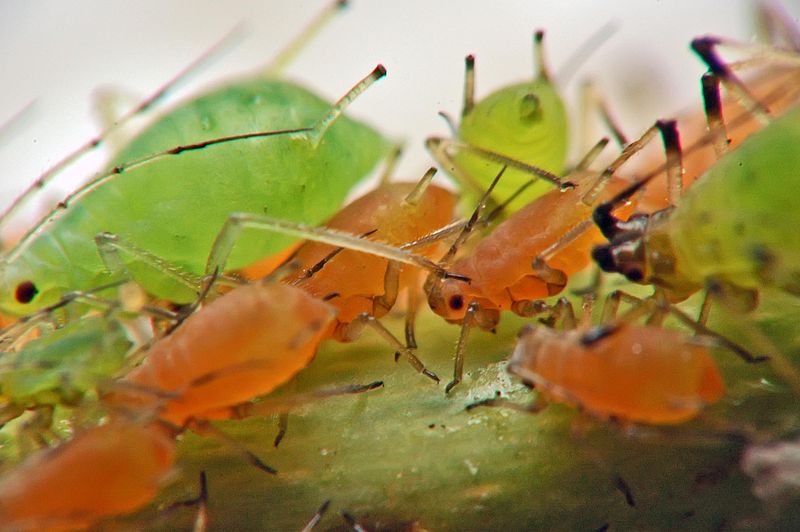
To avoid a pest infestation that can spread to all your indoor plants, be sure to check your overwinter plants for leaf- and soil-dwelling insects. Some pests to look for:
Leaf-dwelling pests:
- Aphids
- Spider mites
- Scale mealybugs
- Gnats
- Spiders
- Lacewings
- Whiteflies
Soil-dwelling pests:
- Slugs
- Sowbugs
- Earwigs
- Fungus gnats
- Ants
The easiest way to remove leaf-dwelling insects is to gently spray the tops and undersides of leaves with water. (You should do this even if you don’t see insects, just to stay on the safe side. You don’t want to bring pests indoors.). If you still see insects after spraying with water, apply an insecticide and keep the plant under quarantine.
For soil-dwellers, just flick them off with your fingers. If you still see insects, apply insecticide on the soil surface and around the pot’s drainage hole.
How to Return Plants Outside Come Spring
Once the risk of frost has passed, and nighttime temperatures stay above 45 degrees, it’s time to take your plants outside. Start by placing the plants next to your house in a somewhat shaded space and gradually move them to brighter areas in your yard.
As temperatures warm up, be sure to water accordingly. Soon, your plants will give you another season of summer colors.
FAQ
Simply check the drainage hole in the pot to make sure it’s not clogged with rocks, debris, or mineral buildup. Clean if needed. Don’t place rocks or gravel in the bottom of a plant pot, as they can hinder drainage.
If you are establishing anew plants or have a winter garden, a cover can protect them from extreme temperatures or snowfall. Landscape fabric, bed sheets, and tablecloths are all good choices for covers. You can also buy row cover fabric from a local home and garden store or online.
While it’s good to replace the potting soil occasionally, it doesn’t have to be done every year. Generally, you can just remove and replace the top third of the mix. Definitely replace the soil if the plant has had an insect problem, and clean the container with a bleach solution.
When to Call in the Pros
Is it time to change the mix of plants in your garden, but you aren’t sure where to start? Consider calling a landscaping professional. A local pro can help you stock your garden with the best mix of cold-hardy and warm-weather plants.
Main Image Credit: Pixabay
